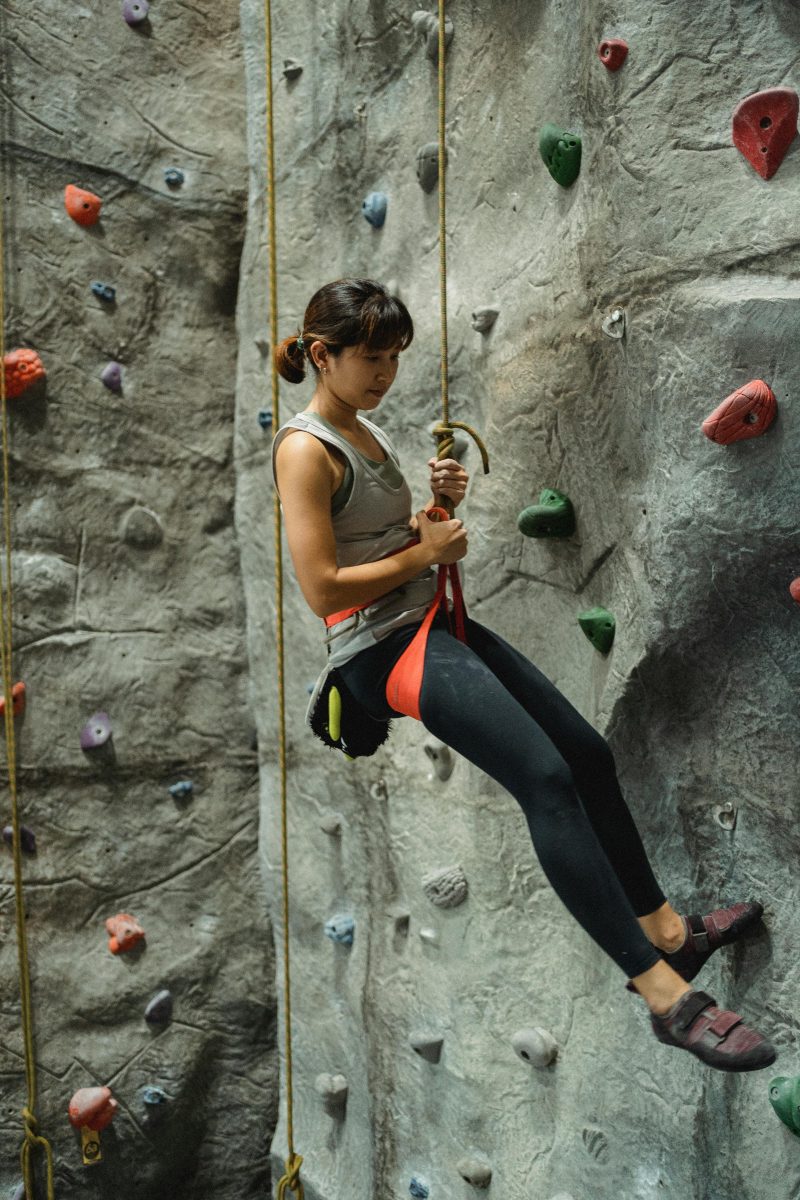Last Updated on: 14th July 2024, 10:55 am
Introduction to Electrolytes and Physical Activity

Electrolytes are minerals with an electric charge, pivotal for numerous bodily functions. They regulate nerve and muscle function, hydrate the body, balance blood acidity and pressure, and help rebuild damaged tissue. When we engage in physical activity, our bodies sweat, leading not just to water loss but to a significant decrease in these crucial minerals.
Physical activity demands a lot from the body. It requires energy, focus, and endurance, all of which can be compromised if electrolyte levels are not maintained. The heart, muscles, and nerves all rely on electrolytes to function properly. Without them, you might experience muscle cramps, fatigue, and even dehydration.
The connection between electrolytes and physical performance cannot be overstated. Maintaining a proper balance of electrolytes not only supports optimal physical performance but also aids in the recovery process after exercise. This is why athletes often reach for electrolyte-rich drinks post-workout. It’s not just about quenching thirst; it’s about replenishing what the body has lost and preparing it for the next challenge.
Understanding the Role of Key Electrolytes

Electrolytes are more than just buzzwords in the fitness world; they are essential minerals that play critical roles in the body’s overall function, especially during physical activity. Let’s dive into the specifics of some key electrolytes and their importance.
Sodium: The Fluid Regulator
Sodium is the chief regulator of fluid balance in the body, ensuring that our cells are neither too swollen nor too shriveled. This delicate balance is crucial for maintaining blood pressure and supporting nerve function. During intense workouts, maintaining sodium levels is key to preventing dehydration.
Potassium: The Heart and Muscle Guardian
Potassium steps into the spotlight when it comes to muscle contractions and cardiovascular health. It works closely with sodium to maintain electrical gradients in cells, vital for heart function and muscle contractions. A dip in potassium can lead to muscle weakness and heart irregularities, making it a critical electrolyte for athletes.
Magnesium: The Energy Conductor
Magnesium plays a pivotal role in over 300 enzymatic reactions, including energy production and muscle relaxation. It’s the mineral that helps turn food into energy and allows muscles to relax after contraction, reducing the risk of cramps and spasms. Its importance cannot be overstated, especially in endurance sports.
Calcium: The Bone and Muscle Architect
Calcium is renowned for its role in bone health, but it’s also indispensable for muscle function. It facilitates muscle contraction and is involved in the generation of nerve impulses. Ensuring adequate calcium intake is essential not just for preventing long-term bone diseases but for immediate muscle performance and recovery.
Each of these electrolytes plays a unique and vital role in our body’s function, especially during physical exertion. Their balanced levels are the linchpin for optimal performance and recovery. Understanding and maintaining these levels can significantly enhance your physical activity and overall health.
Electrolyte Imbalance: Causes, Symptoms, and Consequences

How Physical Activity Can Lead to Electrolyte Imbalance
Intense or prolonged physical activity sweats out not just water but essential minerals too. This loss, if not replenished, can disrupt the delicate balance of electrolytes in the body. Sodium and potassium, crucial for muscle function and fluid balance, are often the first to be affected. Without these key players, the body struggles to maintain its harmony, leading to an electrolyte imbalance.
Recognizing the Signs of Electrolyte Imbalance
Spotting an electrolyte imbalance early is crucial. Symptoms can range from mild to severe, including muscle cramps, fatigue, dizziness, and irregular heartbeat. These signs should not be ignored, especially by athletes, as they can quickly escalate, impacting both performance and health. Paying attention to your body’s signals can help prevent the consequences of an imbalance.
The Potential Impact on Athletic Performance and Overall Health
An electrolyte imbalance can severely hinder athletic performance. Muscles may become weak or cramp, making it difficult to maintain intensity or even continue an activity. In the long term, consistent imbalances can lead to more serious health issues, including kidney problems and cardiovascular diseases. Ensuring a balance of electrolytes is not just about enhancing performance but safeguarding your health for years to come.
Maintaining electrolyte balance is essential, especially for those engaging in regular or intense physical activity. Understanding the causes and symptoms of imbalance, and taking steps to prevent it, can help enhance athletic performance and protect overall health. Remember, when it comes to electrolytes, balance is key.
The Science Behind Electrolyte Replacement

During vigorous physical activity, our bodies work hard, sweating out not just water but essential electrolytes as well. This loss is more than just a minor inconvenience. Electrolytes, such as sodium, potassium, magnesium, and calcium, play critical roles in our body’s function. They power our muscle contractions, maintain our fluid balance, and support nerve function. As these minerals are depleted through sweat, the risk of dehydration and electrolyte imbalance increases, potentially leading to muscle cramps, fatigue, and even more severe health issues.
Proper hydration and electrolyte replenishment are paramount for athletes and fitness enthusiasts alike. It’s not just about drinking water; it’s about restoring the body’s balance of these vital minerals. This balance supports not only optimal physical performance but also aids in the recovery process, preparing the body for its next challenge.
Scientific studies underscore the importance of electrolyte replacement for athletic performance. Research indicates that maintaining electrolyte levels can help sustain endurance, prevent muscle cramps, and reduce recovery time. One study published in the Journal of the International Society of Sports Nutrition highlighted that athletes who replenished their electrolytes during long-distance events experienced less muscle cramping and improved performance compared to those who did not. This evidence makes a compelling case for the strategic replenishment of electrolytes as part of an athlete’s hydration strategy.
Understanding the science behind electrolyte replacement illuminates its critical role in physical activity. Whether you’re an elite athlete or a weekend warrior, paying attention to electrolyte balance can significantly enhance your performance and overall health. Remember, when you sweat, you’re losing more than just water. Replenishing your body’s electrolytes is essential for maintaining the harmony within, ensuring you’re ready for whatever challenge comes next.
Practical Tips for Maintaining Electrolyte Balance

Hydration is not just about water; it’s about balance. Before exercise, aim to drink fluids with a pinch of salt or an electrolyte mix to prepare your body. During activity, sip on electrolyte-infused beverages to replenish what you sweat out. Afterward, continue with electrolyte-rich drinks or water and a balanced meal to restore your body’s equilibrium.
Electrolyte-rich foods are your allies. Incorporate bananas, dairy products, leafy greens, and nuts into your diet. These foods are packed with potassium, calcium, and magnesium, supporting your electrolyte balance naturally. Beverages like coconut water and sports drinks can also be beneficial, offering a quick and convenient source of essential minerals.
When it comes to supplements, caution is key. Opt for reputable brands and follow the recommended dosages. It’s easy to overdo it, leading to imbalances rather than correcting them. If you’re engaging in prolonged or intense physical activity, supplements can be a valuable tool, but they should complement, not replace, a balanced diet and proper hydration practices.
Remember, maintaining electrolyte balance is crucial for optimal performance and recovery. By hydrating strategically, choosing electrolyte-rich foods and beverages, and using supplements wisely, you can support your body’s needs and enhance your physical activity. Balance is not just a goal; it’s the foundation of health and performance.
Special Considerations for Athletes and High-Intensity Activities

Endurance sports and high-intensity training elevate the risk of electrolyte imbalance, a serious concern for athletes. Vigorous exercise increases sweat production, which in turn escalates the loss of key minerals. This can lead to symptoms such as muscle cramps, fatigue, and even more severe health issues if not properly managed.
Individual needs for electrolytes can vary greatly, influenced by factors such as the duration and intensity of the activity, environmental conditions, and personal sweat rates. Tailoring electrolyte intake to these individual factors is crucial for maintaining performance and preventing health risks associated with imbalance.
- Understanding Personal Sweat Rates: Monitoring electrolyte status isn’t a one-size-fits-all approach. It begins with understanding personal sweat rates and the specific demands of the sport or activity.
- Adjusting Intake: Athletes can use this information to adjust their intake of fluids and electrolyte supplements accordingly.
- Regular Blood Tests: Regular blood tests can also provide insights into electrolyte levels, helping to fine-tune intake strategies.
Strategies for optimal electrolyte management include:
- Pre-loading before intense activities
- Consuming electrolytes during exercise
- Replenishing after the activity has concluded
This proactive approach ensures that the body’s electrolyte levels remain balanced, supporting peak performance and rapid recovery.
Remember, while hydration is critical, it’s the balance of water and electrolytes that fuels the body’s high-octane performance. By staying vigilant and responsive to the body’s signals, athletes can maintain the delicate balance of electrolytes necessary for their health and success.
In Closing
Electrolytes fuel peak performance. They are the unsung heroes of physical endurance and recovery. By intricately balancing hydration and mineral intake, athletes can transcend their limits, turning challenges into triumphs. This article has illuminated the path to achieving optimal electrolyte balance, offering practical strategies and scientific insights. Embrace these guidelines to harness your full potential and elevate your physical activity to new heights.
The Importance of Electrolytes in Physical Activity FAQs
Yes, an electrolyte imbalance can significantly affect athletic performance by leading to dehydration, reduced endurance, muscle cramps, and even heat-related illnesses. These conditions can impair an athlete’s strength, speed, and concentration, making it difficult to perform at their best. Ensuring a balanced intake of electrolytes before, during, and after exercise can help maintain optimal performance levels.
Maintaining electrolyte balance during exercise involves staying hydrated and replenishing electrolytes lost through sweat, primarily by drinking water and consuming electrolyte-rich foods or supplements. It’s important to start hydrating before exercise, continue sipping fluids during physical activity, and replenish electrolytes after finishing, especially after prolonged or intense workouts. This strategy helps prevent dehydration and electrolyte imbalance, supporting overall health and performance.
Electrolytes, particularly potassium and calcium, play key roles in muscle contraction and relaxation. An imbalance can lead to muscle weakness, twitching, or severe cramps, affecting your ability to perform and recover from physical activity. Proper electrolyte levels ensure that muscles work efficiently and effectively during exercise and rest.
Sports drinks can help with electrolyte balance by providing a mix of electrolytes, primarily sodium and potassium, and carbohydrates to athletes during intense or prolonged physical activity. They are formulated to quickly replace fluids and electrolytes lost through sweating and provide a source of energy to maintain endurance. However, it’s important to choose drinks that match your activity level and dietary needs to avoid excessive sugar and calorie intake.
Dehydration can significantly disrupt electrolyte balance, leading to a concentration of electrolytes in the body that can impair bodily functions. When you’re dehydrated, your body loses not only water but also electrolytes, making it crucial to replenish both to maintain health and performance. Proper hydration strategies before, during, and after physical activity can help prevent dehydration and maintain electrolyte balance, supporting overall well-being.
Yes, it is possible to have too many electrolytes, a condition known as hypernatremia (too much sodium) or hyperkalemia (too much potassium), among others, which can be harmful. Consuming excessive amounts of electrolytes can lead to nausea, vomiting, diarrhea, and more severe conditions like kidney damage or cardiac arrhythmia. It’s crucial to balance electrolyte intake, especially when using supplements or sports drinks, to avoid these health risks.
Electrolytes are minerals in your body that have an electric charge and are crucial for physical activity because they help regulate nerve and muscle function, hydrate the body, balance blood acidity and pressure, and help rebuild damaged tissue. During exercise, your body loses electrolytes through sweat, particularly sodium and potassium, which can lead to dehydration and diminished performance if not replenished. Maintaining electrolyte balance can prevent cramping, fatigue, and more serious health issues.
Signs of electrolyte imbalance include muscle cramps, fatigue, dizziness, nausea, and irregular heartbeat. These symptoms can arise from either too much or too little of key electrolytes like sodium, potassium, and magnesium in the body. Recognizing these signs early and adjusting electrolyte intake accordingly can help prevent more serious health issues.
Foods rich in electrolytes include bananas, dairy products, leafy greens, nuts, seeds, and avocados, which are particularly high in potassium, calcium, and magnesium. Coconut water and sports drinks are also popular for their sodium and potassium content, which can help replenish electrolytes lost during exercise. Incorporating a variety of these foods into your diet can help maintain electrolyte balance and support physical activity.
Sodium is a key electrolyte that helps maintain fluid balance, supports nerve function, and aids in muscle contraction. During physical activity, sodium is lost through sweat, and this loss needs to be replenished to prevent dehydration and maintain electrolyte balance. Adequate sodium intake before, during, and after exercise can help prevent cramps and fatigue, ensuring optimal performance and recovery.
Orlando is a all round athlete from Australia, now resident in Germany. His sports of passion of American Football(Offensive line), weight training and indoor rock climbing where he uses his 195cm wing span to his advantage.



